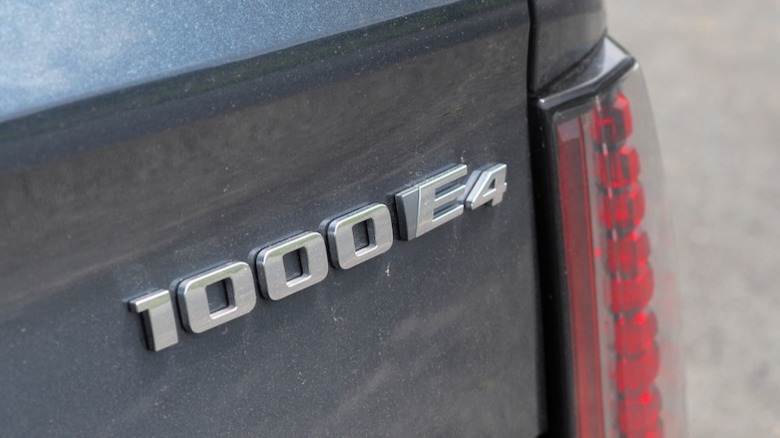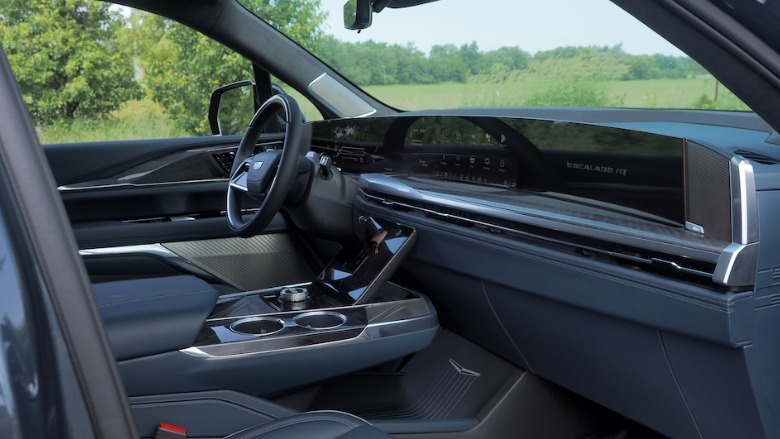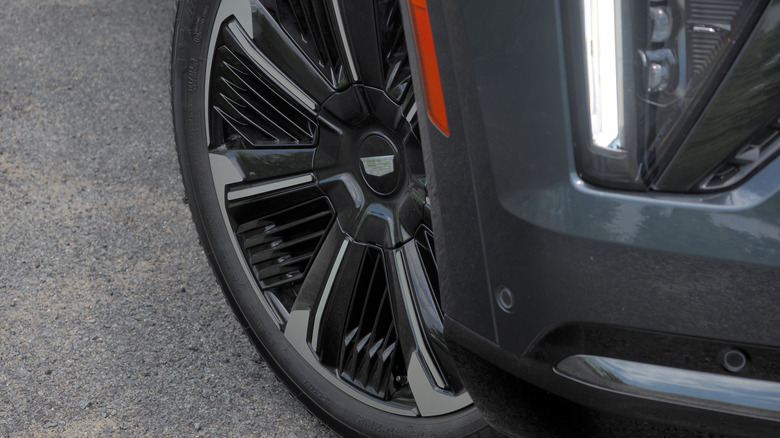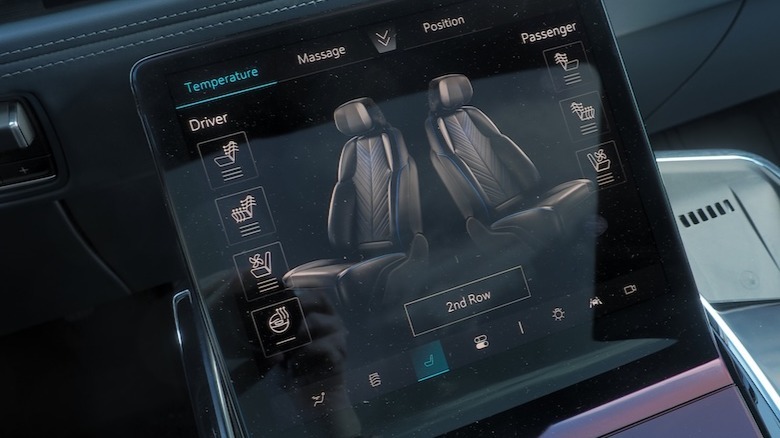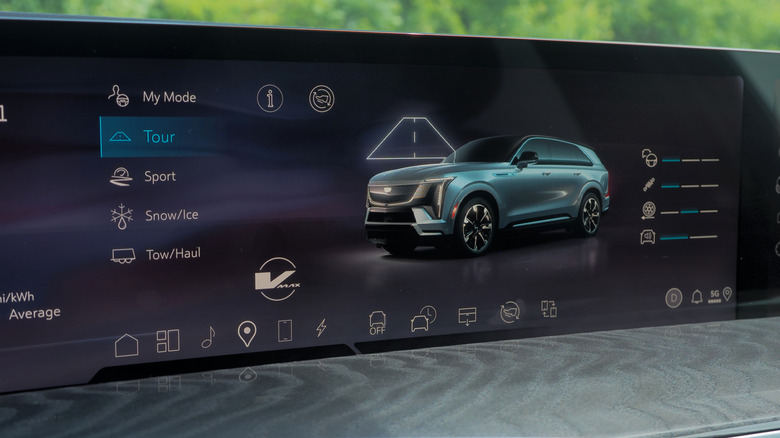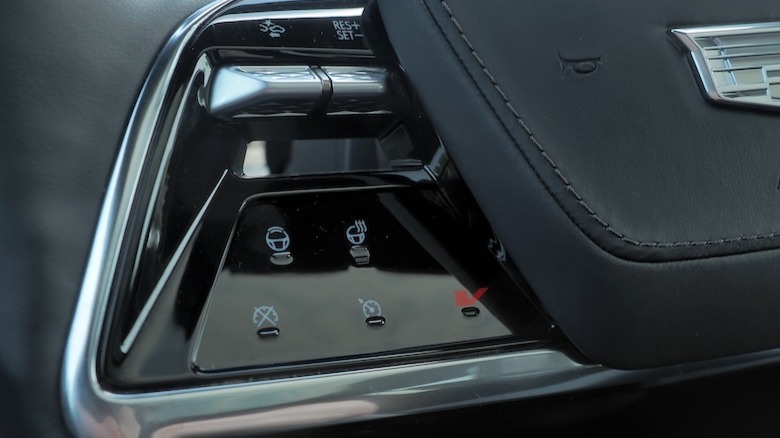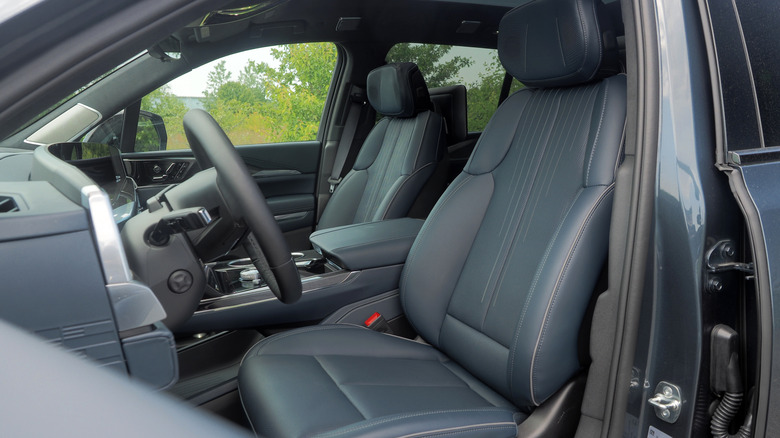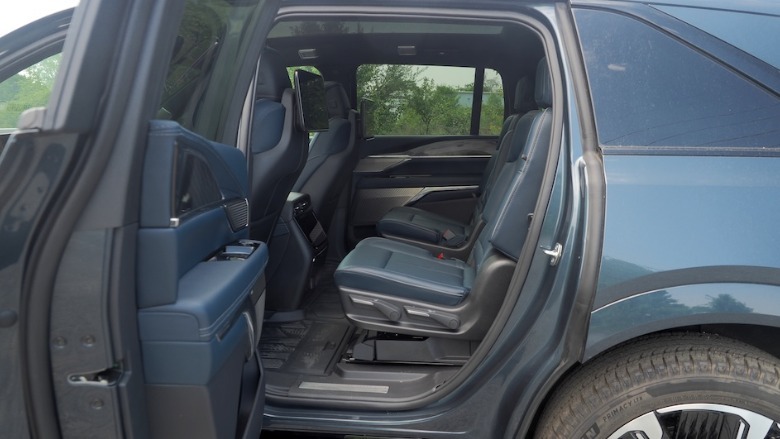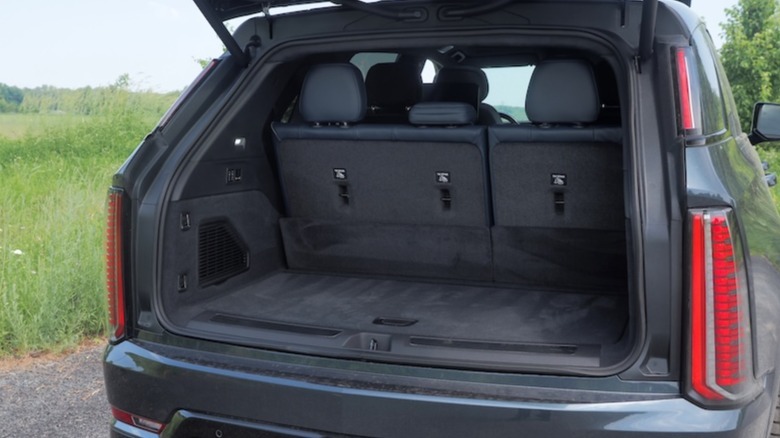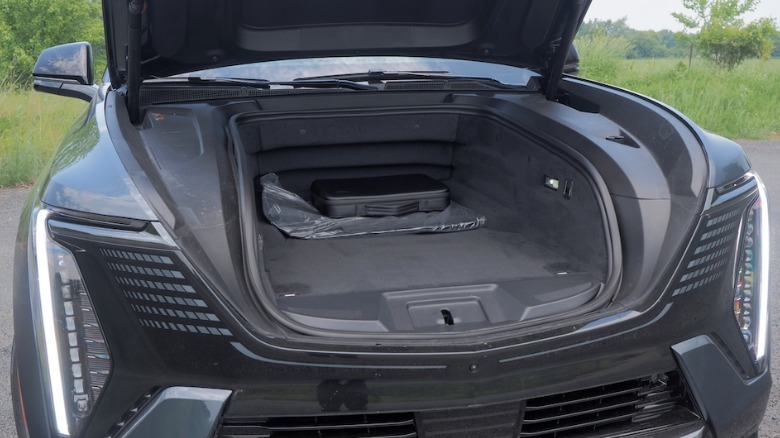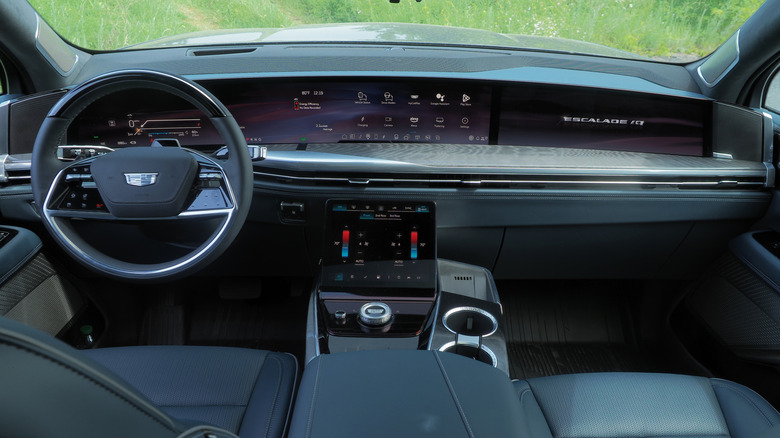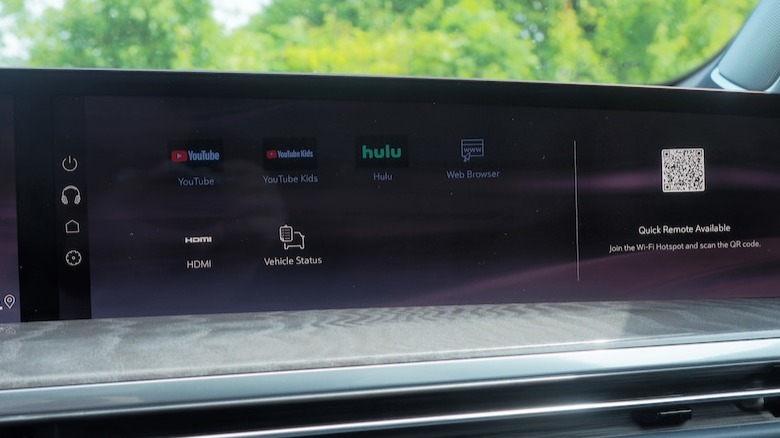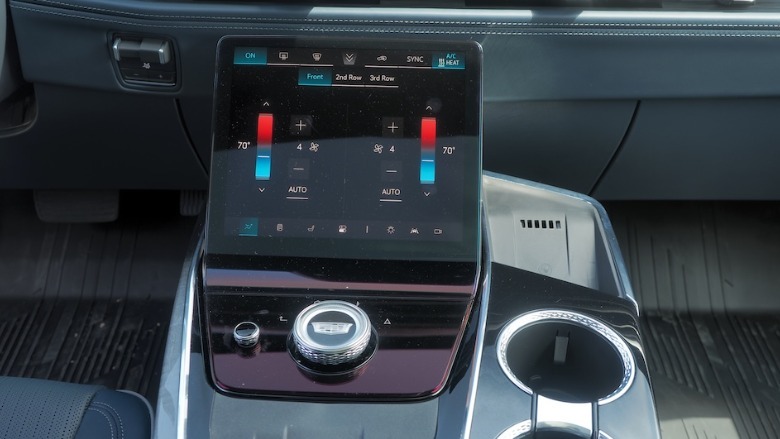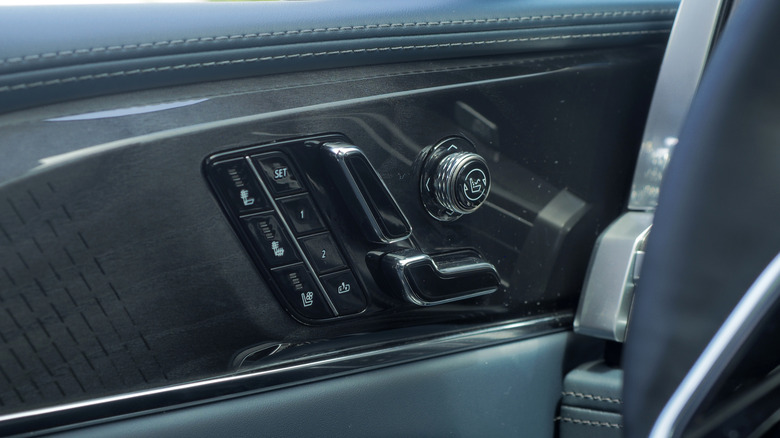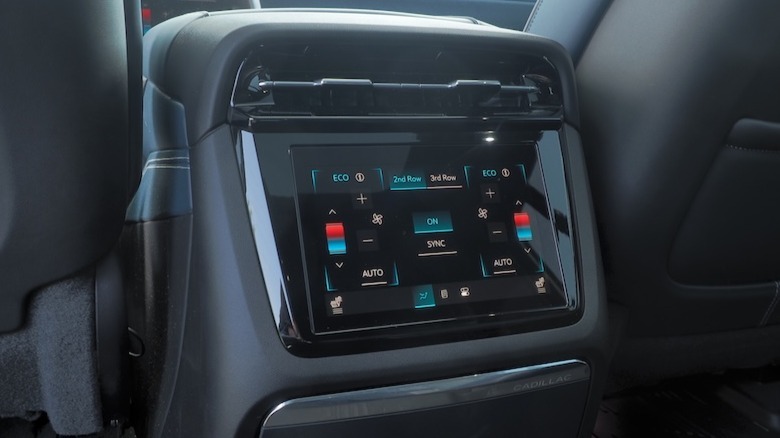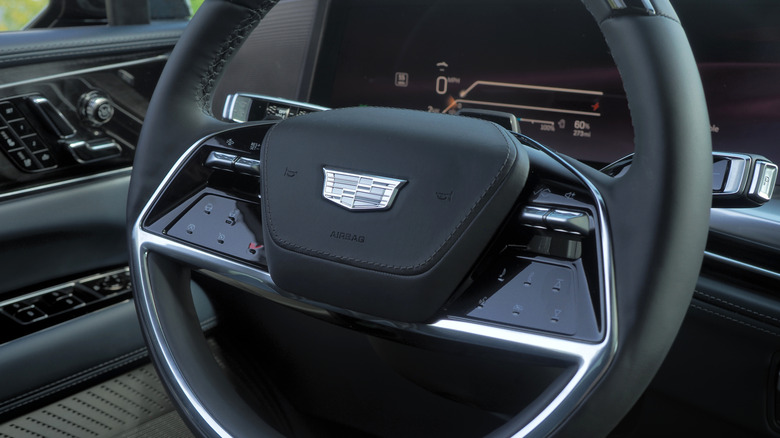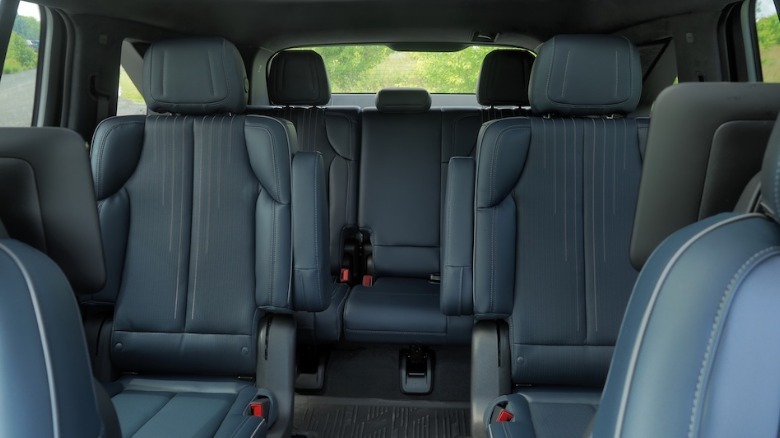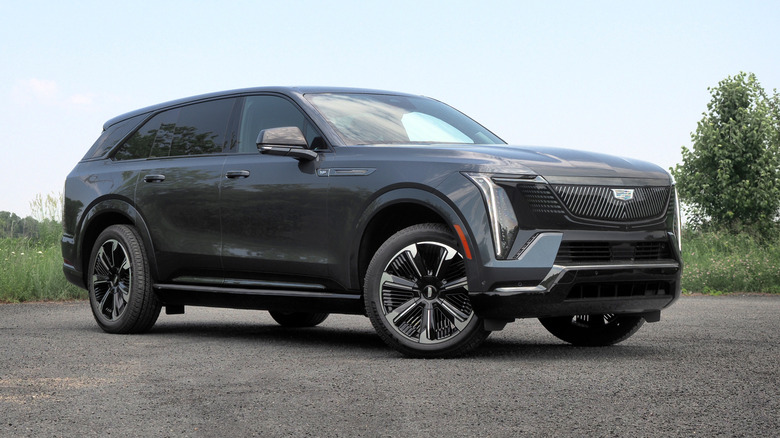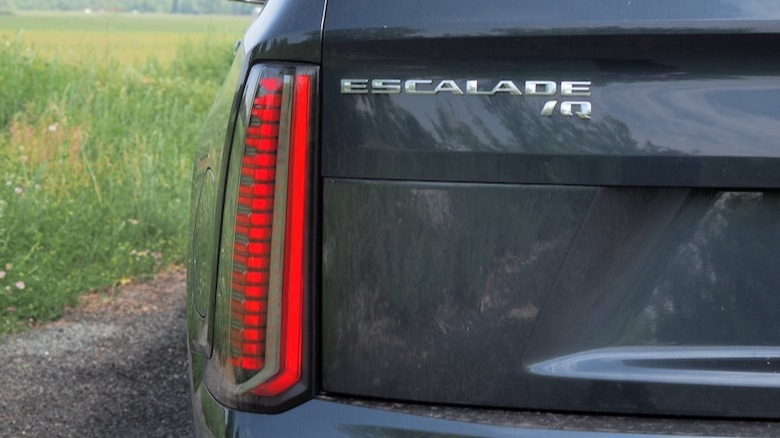2025 Cadillac Escalade IQ Review: The Price Of Real Luxury Is Saying Goodbye V8
General Motors' Ultium platform is cornering the market in big, fairly silly EVs. After a slow start, the scalable architecture for making electrification more cost-effective has, finally, resulted in a pretty decent span of models — and price points — across GM's brands. Still, you get the feeling it's really most enthusiastic about expensive whimsy like the 2025 Cadillac Escalade IQ.
The Escalade nameplate is no stranger to rampant excess, of course. We're talking about a vehicle with a 6.2-liter V8 engine as standard, and more than 17.5 feet long; that's before you get to the stretched ESV version, or the supercharged Escalade-V with its 682 horsepower.
Where the internal combustion Escalade shares a platform with GM's trucks, though, the Escalade IQ's Ultium underpinnings mean it has more in common with the GMC Hummer EV and Chevrolet Silverado EV. It also means it has power figures to make the Escalade-V sound middling: 750 horsepower and 785 lb-ft of torque, courtesy of two electric motors for all-wheel drive.
Aerodynamics make this the sleekest Escalade yet
It's enough to make the 2025 Escalade IQ's $130,090 starting price (including $2,290 destination) feel like a bargain, compared to an Escalade-V kicking off at almost $165k. Well, almost, and that's assuming you're happy with the base Luxury 1 spec (the Sport 1, which differs primarily by some appearance trim, is $500 more). By the time you get to this flagship Sport 2, its options sheet only buoyed by the rear seat entertainment package ($1,995), front-trunk organizer ($995), and Deep Space Metallic paint ($625), you're at $154,105.
After seeing it in the sheet metal, I think the Escalade IQ looks better than its blockier gas Escalade cousin. It's not small, of course, and in fact — at 224.3 inches long and 94.1 inches wide — it's actually slightly longer and wider than the gas model (though the Escalade ESV is lengthier still). The broader, more sharply raked rear pillar of the EV, however, is both more distinctive and more attractive than the relatively uninterrupted shoulder line of the regular Escalade.
The slight taper to the roof, and the angle of the rear glass, give the Escalade IQ a more purposeful profile. Regardless, it's a vehicle that messes with your sense of scale. This particular Caddy rides on 24-inch wheels, but you'd be hard pressed to tell that they were so vast at a glance.
Built to waft
Despite the skinny rubber on those massive rims, for the most part the Escalade IQ wafts like it ought to. In Tour mode — Cadillac's equivalent of "Comfort" — the burly EV whooshes with a barely-restrained potency. There's a whole lot here to like about the Ultium one-pedal mode, and how easy it makes modulating speed with just the accelerator. No jerks, no hiccups; the blend of regenerative and physical braking is refined. Corners are handled with the cosseting minimum of body roll, courtesy of both Magnetic Ride Control and air suspension, without edging into feeling artificial.
The steering is very light, though I doubt most drivers will complain about that sense of imperious remoteness. All trims get four-wheel steer, helping markedly with maneuverability by chopping down the SUV's turning circle. Frankly, I'd not want to drive the Escalade IQ through tight city streets without it, especially given the mediocre visibility due to the height, slab-like proportions, and (legally mandated because of weight) flat passenger-side mirror that perversely introduces a whole-car-swallowing blind spot.
You do get side camera views automatically summoned to the dashboard display when you hit the turn signal, but relying on that instead of what your eyes actually see invariably feels risky. Cadillac Arrival Mode — the Hummer EV's crab-walk party trick, rebranded as a way for your luxe-truck to sashay sideways — is neat, meanwhile, but of limited everyday use.
Fast, if you dare
Switch to Sport (there are also Snow/Ice and Tow/Haul modes, the latter working with the Escalade IQ's 8,000 pound tow rating, and a driver-customizable My Mode setting) or thumb the dedicated Velocity Max button on the steering wheel, and the EV's speed aspirations are unlocked. There's a war being waged behind the scenes, of massive weight against massive power, but what's mainly notable from the wheel is how little that impinges on you.
The main consequence is the stiffer suspension's impact on ride quality. Shoddy asphalt ignored in Tour mode becomes harder to miss, as the Cadillac attempts to cater to tighter turns and swifter changes of direction. Like with all recent generations of Escalade, there's a low-level sense of tempting fate, here: of the outside world being held at so lengthy an arm's distance, you run the risk of forgetting you're driving a vehicle so big, so heavy, and so subject to the laws of physics as everything else.
Velocity Max unlocks a 4.7 second 0-60 mph time, Cadillac says. That's practically dawdling, in expensive EV terms, but still feels more than swift enough here. What's more impressive is how well the Escalade IQ then sheds that speed.
A spacious cabin with a bigger IQL to come
Despite being longer overall, the Escalade IQ actually falls short on second and third row legroom compared to the gas version. The 45.2 inches in the front are slightly higher in the EV, but the second row's 41.3 inches are down a half-inch or so, and the third row's 32.3 inches is 2.6 inches less. Rear cargo room dips, too: 23.6 cu-ft, 69.1 cu-ft, and 119.1 cu-ft behind the third, second, and first rows respectively in the Escalade IQ, versus 25.5, 72.9, and 120.5 cu-ft for the same areas in the Escalade.
Coming up, though, is an even longer version of the EV, the 2026 Escalade IQL. It'll boast the same range and power, Cadillac claims, but a lengthier rump will mean 4.4 inches more third row legroom. Oh, and a total of 125.2 cu-ft of storage.
Either way, the electric Caddy's wildcard is its frunk: with no gas engine lurking under the hood, there's a considerable 12.2 cu-ft of extra storage there. It also gets a 120V 400W AC outlet; a second is found in the cabin.
Inch and cubic-foot quibbles aside, there's no denying that there's plenty of space inside this big SUV. Cadillac trims all rows — with two captain's chairs standard in the second row, and a 60/40 split third-row bench for three — in Nouveauluxe, its faux-leather; that does a solid job of impersonating real hide. The second and third rows power-fold.
Display, display, and more display
Is there such a thing as too much dashboard screen? The Escalade IQ's broad swathe of display — 55 inches diagonal, the automaker proudly boasts — runs nearly A-pillar to A-pillar, its curve bookended by two of the 36 AKG Studio Reference speakers. Cadillac pairs such pixel profligacy with a UI that's rendered almost comically minimalist in comparison. The driver gets a few sketched-out gauges and numbers; the main infotainment icons and widgets float like a sparse archipelago.
Over on the far right, the front passenger gets a screen to themselves for things like YouTube, Hulu, a web browser, or viewing whatever's connected via HDMI input. It's set up so that a driver can't be distracted by what's playing, too.
Down in the center console, a smaller touchscreen — still bigger, mind, than the primary interface on many lesser cars — handles the five-zone climate control, power doors, rear cabin seat adjustment, settings, and more. It's less of a stretch than stabbing at the Google built-in-based infotainment, which has Google Maps and the Google Assistant for voice control, but no Apple CarPlay or Android Auto.
Super Cruise is as helpful as always
They're frustrating omissions (even if there are native apps for select streaming services like Spotify), but I do give Cadillac some credit for not ousting physical controls altogether. Unlike many rival EV-makers, the Escalade IQ has actual switchgear for tweaking seat, mirror, and steering wheel positioning. There's a volume knob, and a dial for scrolling through the main infotainment screen; the vents are manually directed, rather than their airflow finagled via some on-screen slider.
Second row passengers get a dedicated touchscreen for HVAC control, and while the graphics aren't exactly thrilling, all the on-screen buttons are large and easy to understand.
Even the steering wheel is well-stocked with switchgear, including the button for Super Cruise that's standard across all trims. GM's hands-off driver assistance system — which maintains pace and lane positioning on pre-mapped highways and other select roads — continues to impress, even if it can be a little disconcerting at first when the Escalade IQ automatically moves to overtake slower traffic ahead.
Big battery means big range (and big charge times)
For something this vast, a 460 mile range estimate is frankly mind-boggling. Like the Hummer EV, the Escalade IQ relies on brute force to achieve that: or, more specifically, a battery pack more than twice what most electric cars carry. There's a total of 205 kWh, contributing heftily to the 9,000+ pound curb weight. My own mixed driving (including a lengthy run at highway speeds) landed at 1.8 miles per kWh, which would work out to 369 miles maximum; in more urban driving, that rose to about 2.1 mi/kWh, or about 430 miles maximum.
Cadillac splits its battery into two 400V banks so that — assuming you can find a 350 kW DC fast charger — you could add up to 100 miles of range in around 10 minutes, depending on your initial state of charge. An 11.5 kW onboard charger is standard on lower Escalade IQ trims; Cadillac says to figure on adding 22 miles per hour, but you'll need a 60A Level 2 charge station.
A 19.2 kW onboard charger is available, bumping that rate to over 36 miles per hour, but then you'll need a whopping 100A Level 2 charge station to achieve it. For a lot of people, that's going to involve some significant garage rewiring.
In fact, even GM's own Energy PowerShift Charger ($1,699) tops out at 80A, though as with the new three-row Vistiq EV it does — with a further $5,600 for the GM Energy V2H Bundle, plus installation — allow the Escalade IQ's beefy battery to power your house during an outage. That's a handy side-hustle, considering you're driving around the equivalent capacity of about fifteen Tesla Powerwalls or 34 EcoFlow Delta Pro Ultras.
2025 Cadillac Escalade IQ Verdict
The Escalade always felt like an upscale SUV. Electrification leaves this Escalade IQ feeling like a luxury car, that just happens to be an SUV. As with all luxury transportation, you pay handsomely for the privilege of wafting so serenely through life. A gas model starts at under $94k, and even the nicest (though non-V) spec with the V8 still falls short of $123k. For that you get the capaciousness, and the familiar convenience of filling up at a gas station.
Problem is, you don't get the refined potency of Ultium, and having tasted that it's tough to go back. I can't help but conclude that luxury motoring really has been waiting for electrification, in order to shift up to the next level. With its combination of a refined ride and the smooth and torque-rich punch of dual motors, the big Caddy leaves the ICE version feeling vaguely agricultural by comparison.
Like the Hummer EV, there'll be those outraged that something so large, with two-electric-car's-worth of batteries onboard, exists at a time when the world arguably needs more restraint. Thing is, people buy regular Escalades in vast numbers: so far in 2025, Caddy has sold more than twice the amount compared to any of its other models.
Maybe, coaxing some of those drivers into a zero-emissions version — even a deeply profligate one — is a good thing, on balance. Especially if you can unlock some V2H power grid resilience in the process. Like any EV, the Escalade IQ won't be the right fit for everyone, but if you need so many seats, and so much scale, and you have the budget to match, the king of Cadillac's range has more than earned its crown.

